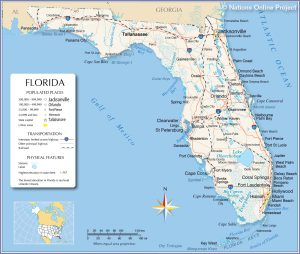The Freemium Model – A Death Knell for Brands?
Editor’s Note: This is a guest post by Dr. Michael Solomon, author of Marketers, Tear Down These Walls! Liberating the Postmodern Consumer.

We are exposed to 4000 to 10,000 ad messages everyday. There’s no doubt we’re all assaulted by brand messages that scream to us on billboards and screens, from within TV shows and movies, and even on Post-It notes and refrigerator magnets. Most of us live in a state of sensory overload. We are exposed to far more information than we can process. That means the fight for your attention—or what some marketers refer to as an eyeball economy—gets tougher all the time.
That’s essentially the statement that one version of the popular freemium (“free” and premium”) business strategy makes to marketers. Sure, a freemium often delivers additional functionality for a fee compared to what the free version does. But for many the real attraction of an upgrade is the chance to shop, play or work in an ad-free environment. When consumers are willing to pony up to avoid seeing your ads, you know there’s trouble in paradise.
Is this bombardment contributing to a sense of logo fatigue? Luxury brands think so. Big players like Louis Vuitton, Gucci, and Prada are struggling as wealthy customers favor less ostentatious products. Those “in the know” often can recognize a subtle status marker when another member of their elite group displays it, such as the distinctive design of a bag or watch—these are “quiet signals.” In contrast, some people may feel the need to almost hit others over the head with their bling; they use “loud signals.” The level of brand prominence people prefer tends to vary by social class, but regardless brands that hit you over the head may be history (at least for now).
Small wonder that many of us resent ad intrusions. Almost 1Ž2 of consumers say they don’t trust brands, and this figure skyrockets among Millennials. Edelman’s 2017 Trust Barometer reported in 2016 that just 45% of respondents said they trusted business. That number dropped to 33% in 2017.
We appear to be entering a period of (mild) rebellion against brands. Consider these related developments in our culture:
- The popular mindfulness movement encourages followers to slow down, tune out distractions (like advertising), and focus on what they’re feeling at the moment (meditation-related businesses in the United States alone generate almost $1 billion in revenue per year – perhaps you see the irony in that?).
- Decluttering has become an obsession for many; an art form that followers revere for its Zen-like flavor.
- As our attachment to social media grows, so too do earnest conversations about the value of a social media detox to restore life balance. I assign one of these (for 72 hours) to my students – they all suffer mightily, then thank me at the end for forcing them to step away from their devices at least for a few days.
- The startup CPG company Brandless sells plainly packaged, high-end staples for $3 apiece.
- The global anti-branding movement protests against corporate marketing campaigns. The “culture jamming” organization Adbusters advocates an annual Buy Nothing Day.
So, what’s the future of branding? Maybe we can glimpse it at – of all places – the stodgy Masters Golf Tournament. The event allows only five sponsors: AT&T, IBM, Mercedes-Benz, UPS and Rolex. Each pays more than $6 million for the privilege of having absolutely no signage at the course and sharing a total of four minutes of ads per broadcast hour. Now that’s “branding lite” but it doesn’t seem to deter these companies.
With freemium, are we missing an interesting business opportunity here? If consumers are willing to pay for a website that is free of branding, imagine what they would fork over to live in a physical spot that’s devoid of logos. Like the social media detox movement, is there a place for a brand detox experience? Would you pay a premium to stay in a resort for a week where you didn’t encounter a single logo? Will we see brand-free zones in public places (especially schools) anytime soon?
At the end of the day, is branding dead? Not so fast. Brands play crucial roles in our lives and in our economy, and we’re not likely to forego them anytime soon. They are signals of quality. They provide continuity, and identify makers so that we can go after them if something doesn’t work as advertised. Perhaps most importantly, they create a “personality” for the brand that goes well beyond functional characteristics. When branding is done right, people love it. Consumers want to talk to the companies that make what they buy – especially if these entities get back to them right away. They rely upon brands to be educational (or at least interesting), and they give their loyalty to those that give back to the community. And most crucially, in our modern world where there the traditional touchstones of social identity like religion and a sense of place are few and far between, brands are the glue that unite us with kindred spirits.
The “nonbrand” movement essentially is a paradox wrapped in a layer of irony. Even the lack of a brand is itself a brand! The brand goes well beyond the logo and a catchy package – it’s what consumers think of when a need is aroused. If you position your product as one that doesn’t require the trappings of branding, you have just branded your product. And you can be sure that your customers will still go through the regular process of evaluating your “nonbrand” just as they do the other purchase decisions they constantly make.
But the devil is in the details. Maybe a “brand lite” environment isn’t such a bad idea – at least until we get lonely for the good old days of brand regular.
Dr. Michael Solomon is the author of Marketers, Tear Down These Walls! Liberating the Postmodern Consumer. He advises global clients in leading industries such as apparel and footwear, financial services and e-commerce, CPG, retailing, sports, manufacturing and transportation on marketing strategies to make them more consumer-centric. He is a Professor of Marketing in the Haub School of Business at Saint Joseph’s University in Philadelphia. For more information, please visit, www.michaelsolomon.com.









